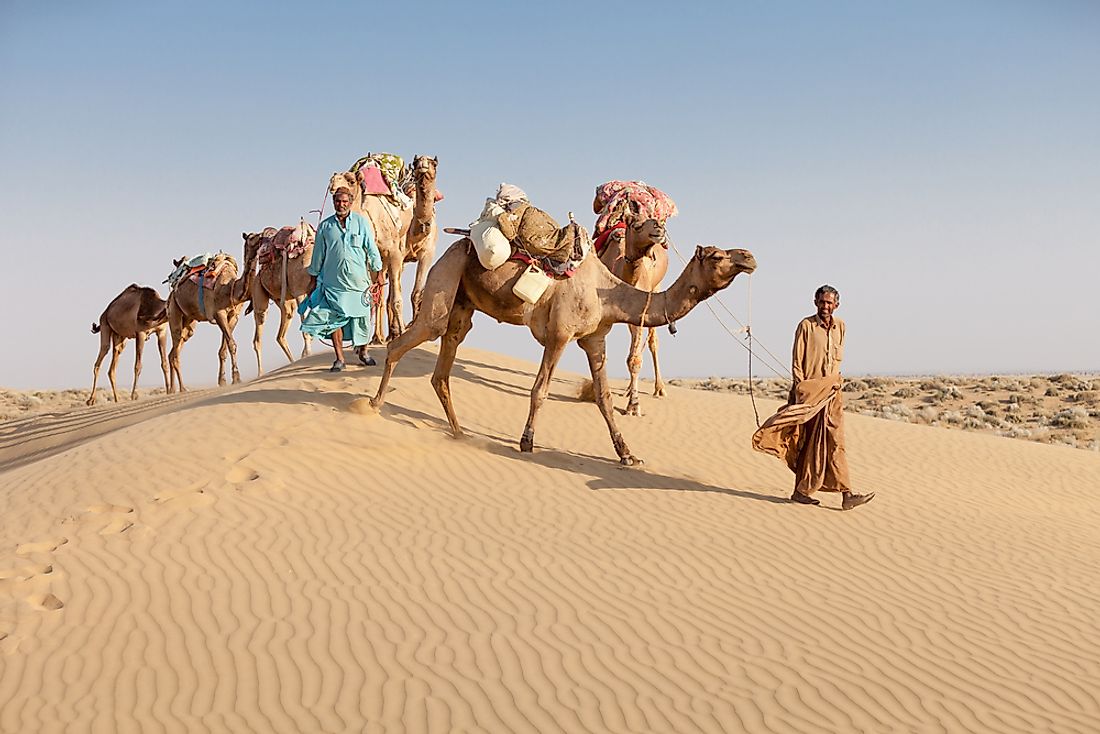Where Is The Great Indian Desert?

Location And Description
The Great Indian Desert, also known as the Thar Desert, is a massive arid land in the northwestern portion of the Indian subcontinent. Lying party in the Rajasthan state of India and partially in the Punjab and Sindh provinces of Pakistan, the Great Indian Desert forms a perfect natural boundary between India and Pakistan. Against other deserts in the world, the Great Indian Desert ranks 18th in terms of size, while it ranks 9th in terms of size against other subtropical deserts in the world.
Thar covers a span of around 77,000 square miles. The desert is bordered to the west by the richly irrigated Indus River plain while the north and northeast is marked off by the Punjab Plain. The Aravalli Range is to the southeast while the south is bordered by the Rann of Kachchh. The name “Thar” originates from the word “thul” that roughly translates to sand ridges, a common feature in the region.
The bigger percentage of the desert, about 85%, lies in India with the remaining 15% in Pakistan. These percentages translate to 66,000 square miles in India with the remaining 12,000 square miles in Pakistan. In India, most of the desert is in the Rajasthan state with a bit of it extending into Punjab, Gujarat, and Haryana.
Habitat
The desert is full of sand dunes with a diverse and rich ecosystem that makes the Thar a unique desert compared to most deserts in the world. Regarding animal life, there are at least 23 species of lizards and about 25 snake species with several of these endemic to the desert. Another suitable example of diversity and uniqueness is that the desert is a habitat for species that are dwindling in other parts of India. Such species include the blackbuck, the Indian wild ass, and the chinkara. In addition, there are about 141 species of birds including eagles, falcons, vultures, and others.
The plant life, classified as Northwestern thorn scrub forest, is also present. Trees and shrubs are thriving including the likes of Mimosa hamate, Acacia jacquemontii, Lycium barbarum, and many more. Species of herb and grasses thriving in the Thar include Typha species, Ochthochloa compressa, Saccharum spontaneum, and others. Endemic flower species include species such as Calligonum polygonoides and Tamarix aphylla.
Tourism And Economy
Due to its uniqueness, it is no surprise that the Thar Desert is a popular tourist destination, especially in recent times. Ecotourism is thriving with visitors seeking to experience what life is like in the desert with activities such as camel rides, trekking, and other activities. International tourists also serve to provide revenue to the government.
The desert also served the economy since it is a major quarrying site. For example, the historical and famous Taj Mahal was constructed with white marble mined from Naguar district. In addition to the white marble, the region is also the biggest sources of cement used in India. Coal deposits are also available in places such as Kapuradi, Gudha, and others. Other resources in the desert include petroleum storage in Barmer and Jaisalmer districts, natural gas, and the production of electricity from wind and solar energy.







